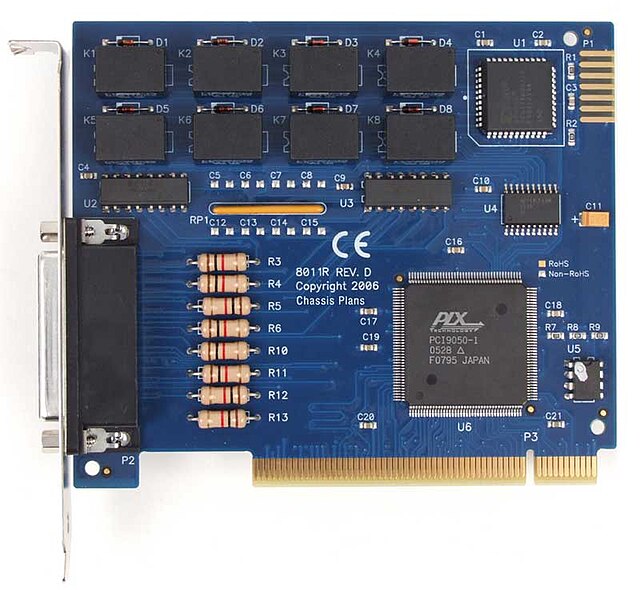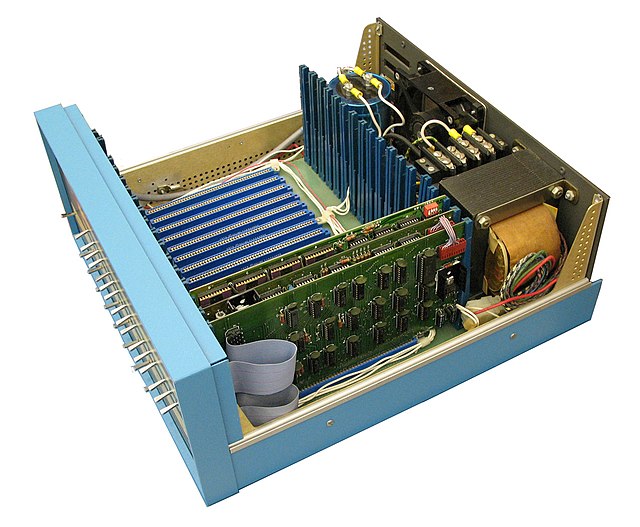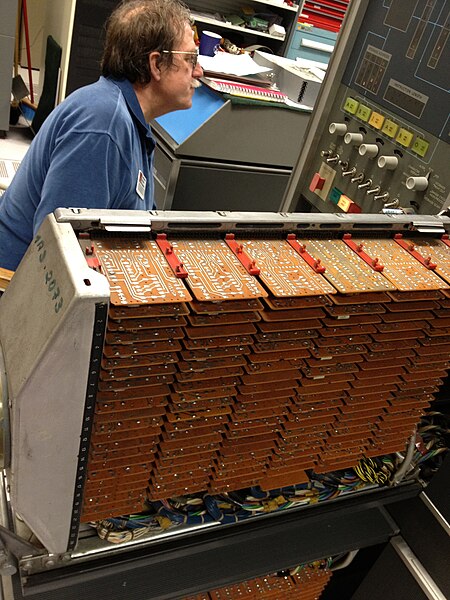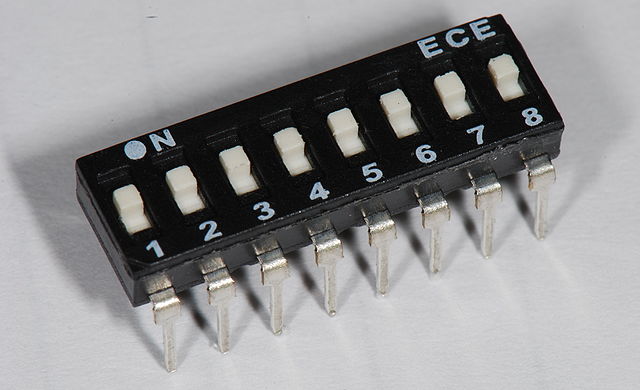Accelerated Graphics Port
Accelerated Graphics Port (AGP) is a parallel expansion card standard, designed for attaching a video card to a computer system to assist in the acceleration of 3D computer graphics. It was originally designed as a successor to PCI-type connections for video cards. Since 2004, AGP was progressively phased out in favor of PCI Express (PCIe), which is serial, as opposed to parallel; by mid-2008, PCI Express cards dominated the market and only a few AGP models were available, with GPU manufacturers and add-in board partners eventually dropping support for the interface in favor of PCI Express.
Universal AGP slot (brown, top), 2 PCI 2.2 slots (white beige, middle), and CNR slot (brown, bottom)
An AGP card
AGP graphics card (Apple Macintosh)
AGP Pro graphics card
In computing, an expansion card is a printed circuit board that can be inserted into an electrical connector, or expansion slot on a computer's motherboard to add functionality to a computer system. Sometimes the design of the computer's case and motherboard involves placing most of these slots onto a separate, removable card. Typically such cards are referred to as a riser card in part because they project upward from the board and allow expansion cards to be placed above and parallel to the motherboard.
Example of a PCI digital I/O expansion card using a large square chip from PLX Technology to handle the PCI bus interface
Altair 8800b from March 1976 with an 18-slot S-100 backplane which housed both the Intel 8080 mainboard and many expansion boards
Rack of IBM Standard Modular System expansion cards in an IBM 1401 computer using a 16-pin gold plated edge connector first introduced in 1959
Configuration DIP switches in a 16-pin through-hole package as often found in ISA expansion cards from the 1980s








